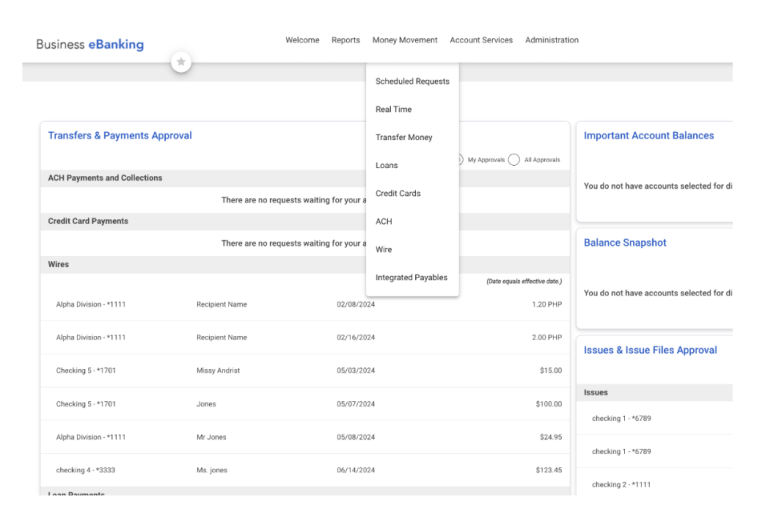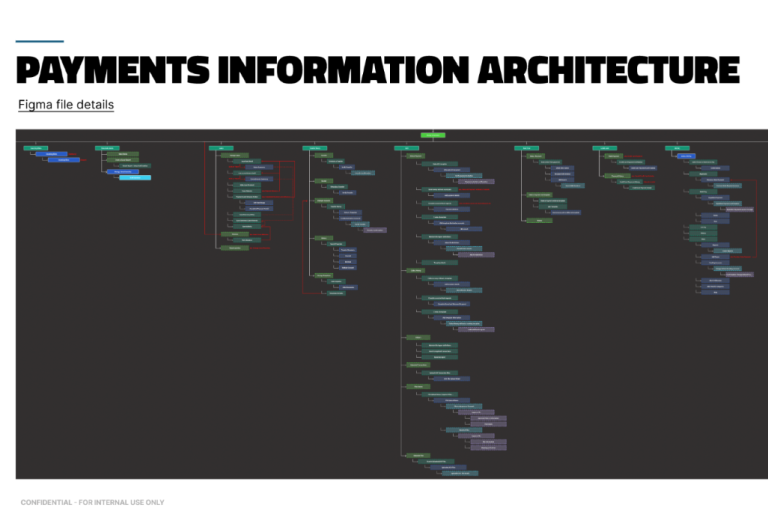Payments Modernization Example
This example demonstrates the "art of the possible" repeatable approach I use in UX projects, but without revealing company proprietary information. I am happy to talk through more details about context, purpose, recommendations and results.

Context
This example centers around two goals for a SaaS, multi-tenant business banking application:
- Bank clients and end users were looking for a more modern, streamlined payments functionality.
- Product and business leadership were looking to expand the user base to include small businesses, in addition to the current mid- to large-size business users. Small business payments needs are different in many ways than commercial business banking.

Working Document
Created a collaborative working document where analysis, competitor information, notes, recommendations and exploratory concepts/wireframes/designs are kept.
This made sharing progress with stakeholders and pulling together a presentation much easier, as well as providing documentation for any other team members who might need to pick up the project without them having to reinvent the wheel.

Current State Analysis
Is there research available? In this case, there was limited small business persona/user research but nothing specific to this business banking product, so I moved forward with other methodologies to help make decisions and recommendations.
Conducted/collected information architecture, user task, and heuristic reviews for the payments flows. Created user journeys/flows and analysis matrices to organize that information.

Competitor Analysis
Conducted analysis with competitor business banking user guides (in the absence of having access to their actual products), as well as accounting software popular with small businesses.
Created a chart and summary to highlight pros/cons and design inspirations.

Insights Gained
Among many insights, the most relevant one was that business banking users, especially small businesses, thought of payments as “I need to pay person/company for X reason.” Ideally, include stored payee data – name, account numbers, preferred payment rail, etc. - to streamline the data entry needed for a transaction.
This was a departure from the current flow, where the user started by choosing the payment rail – ACH, wires, real-time transfer, etc. - then entered or imported payee data.

Recommendations
This undertaking would benefit from some internal design-thinking workshops and user research, especially with small business users.
The idea of “payments modernization” included different functionality depending on who you asked. Holding an internal stakeholder workshop would help align scope and priorities so the team could move forward with the same vision and goals.

Results - Now
Identify “low hanging fruit” items in the current product that would improve consistency in the UI and overall interaction patterns without a significant effort. Reduce UX debt. This could be addressed at any time.

Results - Next
Because this was a significant business goal, it was recommended to start with what we had, but to conduct user research and usability tests to better understand user needs and pain points with the current product. Ideally, the goal was to create a future version that would stand out in the business banking landscape. This would require a funding ask.

Results - Later
Build new Payee Management functionality that streamlines the start of any payment process (bill pay, ACH, wire transfer, real-time transfers). Concepts and wireframes were created to support this proposal, that was built out as an enhancement to the product.
©Copyright. All rights reserved.
We need your consent to load the translations
We use a third-party service to translate the website content that may collect data about your activity. Please review the details in the privacy policy and accept the service to view the translations.